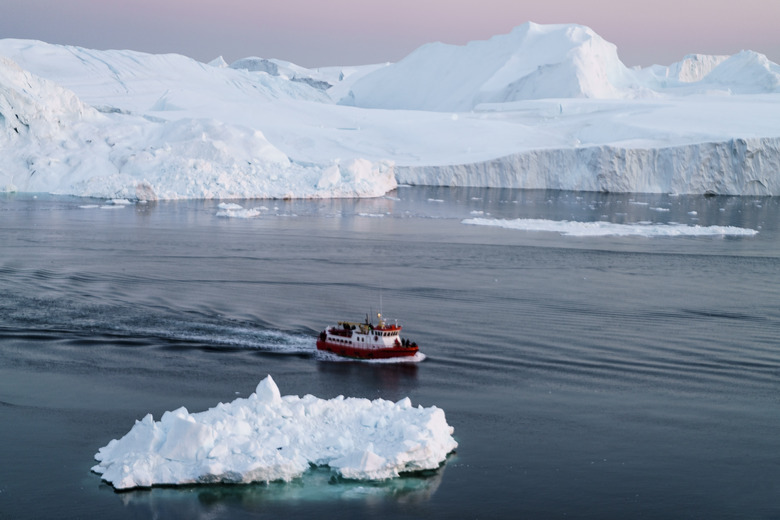How Does Latitude Affect Climate?
If you happen to believe the Earth is flat, you'll have a difficult time explaining global climate variations and seasons. If you accept the fact the Earth is a sphere, however, it's no problem. The variations are the result of two phenomena: the orbit of the Earth around the sun and the tilt of the Earth's axis relative to the orbit.
The tilt is the primary reason that different latitudes experience different weather patterns or climates. Outer planets, such as Saturn, have similar tilts, but they don't experience latitude-dependent climate variations in the same way because they aren't as close to the sun.
TL;DR (Too Long; Didn't Read)
Primarily owing to the tilt of the Earth's axis, temperatures cool with increasing latitude, which is a measure of angular distance from the equator. This phenomenon creates three distinct climatic zones on the planet.
What Are Latitude and Longitude?
What Are Latitude and Longitude?
Any point on the surface of the Earth can be defined by a pair of angular coordinates known as longitude and latitude. Longitude is a line stretching from pole to pole with a given angular displacement from the Prime Meridian, which runs through Greenwich, England. Latitude is defined as the angular distance from the equator and is designated North or South depending on the hemisphere. The equator defines zero degrees latitude, which locates the North and South Poles at 90 degrees North and South respectively.
Temperatures Cool With Increasing Latitude
Temperatures Cool With Increasing Latitude
As latitude increases, the sun shines more obliquely and provides less warming energy. The equator always faces the sun directly, so the climate is warm year-round, with the average day and night temperature hovering between 12.5 and 14.3 degrees Celsius (54.5 and 57.7 degrees Fahrenheit). At the poles, however, winter and summer temperatures show a wider variation. The average temperature in the Arctic varies from zero C (32 F) in summer to -40 C (-40 F) in winter, while in the Antarctic, the temperature varies from -28.2 C (-18 F) in summer to -60 C (-76 F) in winter. The Antarctic is colder for two reasons: it's a landmass, and it's at a higher elevation than the Arctic.
What's Tilt Got to Do With It?
What's Tilt Got to Do With It?
The Earth's tilt affects the angle of incident sunlight on a particular location, but if that were its only effect, you would expect higher temperatures at each pole in summer. After all, that's when the pole is facing the sun and is actually slightly closer to it than the equator. This doesn't happen because at other times of the year the sun's rays have to pass through a thicker atmospheric filter than at the equator, producing cold enough temperatures to create permanent ice. In the summer, some of this ice melts, but the ice that doesn't melt reflects sunlight and prevents it from warming the atmosphere to the same extent it does at the equator.
Three Climatic Zones
Three Climatic Zones
Average temperatures cool with increasing latitude, producing well-defined climatic zones on the planet.
- The Tropic Zones extend from the equator north to the Tropic of Cancer at 23.5 degrees north to the Tropic of Capricorn at 23.5 degrees south. This is a region of generally warm temperatures and lush tropical vegetation.
- The Temperate Zones extend from the Tropics of Cancer and Capricorn to the Arctic and Antarctic Circles, which are located at 66.5 degrees north and south latitude respectively. These regions experience moderate temperatures and large temperature variations. The summers are hot and the winters cool.
- The Polar Zones extend from the Arctic and Antarctic Circles to the poles. In these regions, temperatures are cold and vegetation sparse.
Cite This Article
MLA
Deziel, Chris. "How Does Latitude Affect Climate?" sciencing.com, https://www.sciencing.com/latitude-affect-climate-4586935/. 25 April 2018.
APA
Deziel, Chris. (2018, April 25). How Does Latitude Affect Climate?. sciencing.com. Retrieved from https://www.sciencing.com/latitude-affect-climate-4586935/
Chicago
Deziel, Chris. How Does Latitude Affect Climate? last modified March 24, 2022. https://www.sciencing.com/latitude-affect-climate-4586935/
